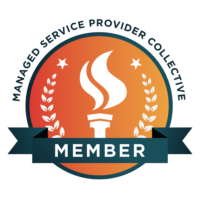The Changing Landscape of Government Grant and Contract Procurement
Navigating the complexities of government grant and contract procurement is no small feat. With shifting policies, evolving funding priorities, and heightened competition, organizations must adopt proactive, strategic approaches to secure funding in today’s dynamic landscape.
We recently had the opportunity to discuss this topic with Ross Robinson, Vice President of Nonprofit Services at NeoSystems, who brings over 30 years of industry expertise to the table. Ross shared valuable insights into how organizations—from government contractors to nonprofits—can align their needs with funding opportunities, craft compelling proposals, and build relationships with funders to achieve long-term success.
Below, we summarize the key strategies, practical tips, and expert advice Ross has to offer.
Understanding the Current Funding Landscape
The first step to navigating the government funding landscape is understanding its evolving nature. Ross emphasized the importance of aligning your organization’s goals with current administrations’ policies and priorities. For example, certain sectors and programs that were once well-funded may no longer be aligned with government priorities. Organizations must stay informed about these changes and strategically position themselves to address areas where the government is actively investing resources.
“Securing funding isn’t just about submitting proposals,” Ross explains. “It’s about demonstrating how your program helps the administration achieve its agenda. This requires understanding funding restrictions and presenting your work in a way that resonates with current goals.”
Promoting Your Organization’s Strengths
One of the most effective ways to stand out in grant and contract procurement is by showcasing your organization’s unique strengths. According to Ross, applicants need to clearly articulate their mission and goals, identify their target audience, and highlight their expertise, track record, and resources.
Ross advises breaking this process into three specific steps:
- Define Your Mission and Goals: Clearly outline what your organization intends to achieve and the impact it will have. Funders are more likely to prioritize applicants who present well-defined missions aligned with public needs.
- Identify Your Target Audience: Understand who your work serves and articulate how your programs address existing challenges within your market. Funders want to know that your offerings are practical, impactful, and community-focused.
- Highlight Your Expertise: Promote your organization’s qualifications, partnerships, and resources. Include success stories, data-driven outcomes, and evidence of your ability to deliver results.
Identifying Relevant Funding Opportunities
Successful organizations employ a disciplined approach to identify the right funding opportunities. Ross recommends focusing on three critical components:
- Research: Invest time in researching government agencies, corporations, and foundations that align with your mission and service offerings. Understanding a funder’s values ensures compatibility.
- Analyze Funding Criteria: Carefully examine each funding opportunity’s requirements, priorities, and expectations. This step helps identify opportunities that best align with your strengths and capabilities.
- Develop a Strategic Funding Plan: Create a master plan to track opportunities, prioritize applications, and outline how you will approach potential funders. Solid planning can greatly enhance efficiency and outcome predictability.
Crafting Compelling Narratives and Proposals
When it comes to creating persuasive proposals, Ross emphasizes the importance of storytelling. “Your proposal isn’t just a formality,” he says. “It’s your opportunity to explain why your organization is uniquely positioned to deliver impact.”
Tips for Crafting Strong Proposals:
- Describe Solutions and Impacts: Clearly explain how your proposed programs provide tangible solutions and the measurable impact they’ll have.
- Quantify Achievements: Use data and metrics to highlight your past successes and demonstrate your ability to deliver results consistently.
- Follow Instructions Meticulously: Always adhere to application guidelines and requirements to avoid disqualification.
- Create Realistic Budgets: Provide accurate cost projections and justify expenses with data-backed reasoning.
Ross also stressed the importance of presenting a polished and professional proposal. “Attention to detail can make or break your application. Every aspect—from the narrative to the budget, even the formatting itself—needs to instill confidence in funders.”
Building Relationships with Funders
More than just submitting applications, building relationships with funders is key to long-term success. Ross notes, “The most successful organizations aren’t just transactional; they invest time in forming genuine relationships with funders.”
This involves continuous engagement, follow-ups, and open communication. Ross advises organizations to:
- Follow Up: After submitting a proposal, reconnect with the funder to thank them for their consideration and remain available for further questions.
- Seek Feedback: If your proposal is rejected, ask for constructive criticism. This feedback can provide invaluable insights to improve future applications.
Proactive networking with funding agencies can often provide insights into their expectations and decision-making processes, allowing you to craft more tailored and effective proposals.
Key Takeaways from the Webinar
During a recent webinar discussion with the National 8(a) Association membership on “Aligning Projects with Government Priorities,” Ross further expanded on strategies for securing government funding. Key insights included:
- Aligning projects with government priorities to increase funding potential, even if adjustments to program language are necessary.
- Providing guidance to small organizations (such as 8A members) on navigating policies and procurement procedures.
- Taking proactive steps to strengthen relationships with project directors, funders, and other key stakeholders.
By focusing on what they can control, organizations can better position themselves to thrive even amidst uncertainty in government priorities.
Unlock Your Funding Potential Today
Navigating the intricacies of government grant and contract procurement doesn’t have to overwhelm your organization. By aligning your mission with government priorities, promoting your strengths effectively, and building lasting relationships, you can set the foundation for long-term success.
Feel ready to take the next step? Don’t miss the full webinar recording where Ross provides deeper insights and actionable guidance on these strategies. Click below to watch now.












